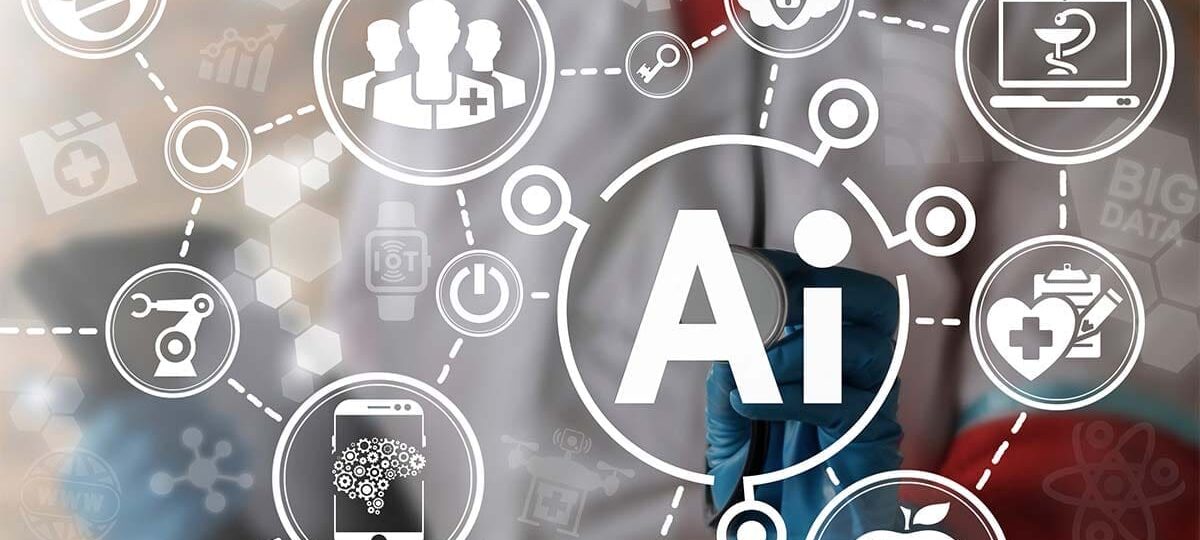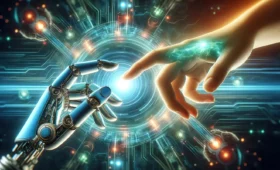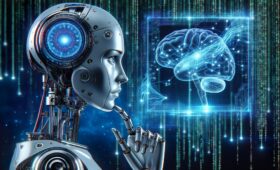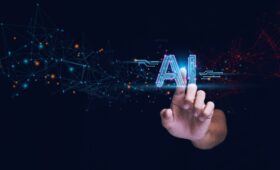Artificial Intelligence (AI) has rapidly emerged as a driving force behind many of today’s groundbreaking innovations. From healthcare and finance to entertainment and education, AI is transforming industries and reshaping the way we live and work. But is AI truly the key to innovation, or is it simply one tool in a much larger landscape? To answer this question, we need to explore the ways in which AI is fueling innovation, the limitations it faces, and whether human creativity still plays a pivotal role in driving truly transformative change.
How AI Fuels Innovation
AI has proven to be an incredible asset for sparking innovation across various sectors. Here’s how it’s contributing:
1. Accelerating Research and Development
AI significantly enhances the pace of research and development (R&D) by analyzing vast amounts of data at speeds that humans cannot match. In fields like drug discovery, for example, AI models can sift through enormous chemical databases, predicting which compounds could be effective in treating specific diseases. This capability allows researchers to develop new treatments and drugs far more efficiently than through traditional methods.
AI’s ability to optimize experimental designs, simulate various conditions, and predict outcomes is speeding up innovation in various domains, including materials science, renewable energy, and agricultural technology.
2. Personalized Experiences and Products
AI is revolutionizing the way businesses understand and serve their customers. By analyzing user data, AI can identify patterns in behavior and preferences, enabling companies to create personalized experiences and tailor products to individual needs. For example, in retail, AI-powered recommendation engines suggest products based on past purchases and browsing habits, creating a more engaging and relevant shopping experience.
In the entertainment industry, streaming services like Netflix and Spotify use AI to curate content tailored to individual tastes, fostering innovation in how content is created and consumed. This level of personalization has sparked entirely new business models and industries built around data-driven experiences.
3. Enhancing Creativity and Design
AI is also a valuable tool in creative industries. While AI is not a substitute for human creativity, it can complement the creative process by offering new ideas, suggestions, and optimizations. In music, AI is capable of composing original pieces based on specific genres or emotions, giving artists fresh material to work with. In visual arts, AI tools like DALL-E have enabled creators to generate artwork from text prompts, opening up new possibilities for digital art and design.
In architecture and product design, AI is used to generate thousands of design iterations based on specific parameters, allowing designers to explore unconventional ideas and push the boundaries of what’s possible.
4. Optimizing Processes and Efficiency
AI can help businesses and organizations improve efficiency and streamline operations. Automation of repetitive tasks, predictive maintenance, and intelligent scheduling are just a few examples where AI reduces time, labor, and costs, leading to more efficient workflows. In industries like manufacturing, AI-driven robots are not only enhancing production rates but also enabling the creation of more sophisticated, customized products.
By optimizing processes, AI frees up human talent for more creative and strategic tasks, allowing businesses to focus on high-value activities that drive innovation.
AI’s Limitations in Driving Innovation
While AI is undoubtedly a powerful tool for innovation, it does have its limitations:
1. Lack of True Creativity
AI excels at identifying patterns in data and can generate results based on existing knowledge, but it cannot think or create entirely new ideas from scratch in the same way humans can. True innovation often comes from thinking outside the box, making connections between seemingly unrelated concepts, and breaking established rules. AI, for all its strengths, operates within predefined parameters and lacks the kind of creative intuition that humans bring to the table.
For example, while AI can analyze large datasets to predict market trends, it can’t envision an entirely new industry or product that doesn’t exist yet. Human creativity remains at the heart of major breakthroughs in science, art, and technology.
2. Dependence on Data
AI is heavily reliant on data. Its ability to generate insights, predictions, or solutions is only as good as the data it is trained on. In many cases, data can be incomplete, biased, or not representative of real-world conditions. This can lead to suboptimal or even erroneous results, which is particularly problematic in fields like healthcare, finance, and law, where decisions made by AI can have significant consequences.
Moreover, for AI to drive innovation, it requires vast amounts of high-quality data, which may not always be available, especially in emerging fields or developing markets.
3. Ethical and Societal Concerns
AI’s potential to innovate comes with significant ethical concerns, particularly around privacy, bias, and job displacement. AI systems can inadvertently perpetuate biases if they are trained on biased data, leading to unfair outcomes in areas like hiring, law enforcement, and lending. These issues can undermine trust in AI-driven innovations and prevent society from fully benefiting from them.
Additionally, the automation of jobs through AI raises concerns about widespread job displacement, which could exacerbate economic inequality and lead to societal instability. While AI can drive efficiency, the human cost of its implementation must be carefully considered.
The Role of Human Creativity in Innovation
AI’s role in innovation should be seen as complementary to human creativity, rather than a replacement. The most impactful innovations tend to come from the collaboration between human intelligence and AI’s computational power. Human intuition, ethics, creativity, and emotional intelligence are irreplaceable qualities that AI lacks.
For example, the most transformative AI-driven products and services, such as self-driving cars, virtual assistants, and personalized healthcare solutions, were all inspired by human visionaries who identified problems and envisioned AI-based solutions. It is the combination of human creativity and AI’s analytical capabilities that leads to the most meaningful breakthroughs.
AI in Innovation: The Future Outlook
Looking to the future, AI will undoubtedly continue to be a key driver of innovation. As AI technology advances, it will empower individuals and organizations to solve complex problems in new and creative ways. Fields such as climate change, space exploration, and sustainable energy will benefit immensely from AI’s ability to analyze vast datasets, optimize processes, and simulate scenarios that would be impossible for humans to manage on their own.
However, human ingenuity and ethical decision-making will remain essential. AI will not be the sole key to innovation but rather a powerful enabler that amplifies human potential.
Conclusion
AI is undoubtedly a major catalyst for innovation across many industries. Its ability to analyze data, optimize processes, and automate tasks opens up new possibilities for improving productivity, creating personalized experiences, and accelerating research and development. However, AI’s role in innovation is not about replacing human creativity but about augmenting and enhancing it.
The future of innovation lies in the synergy between human creativity and AI’s computational power. Together, they can solve problems, break new ground, and create a future that was once unimaginable. While AI is a key enabler of innovation, it is human insight, vision, and ethical judgment that will ultimately determine how AI is used to create a better world.




